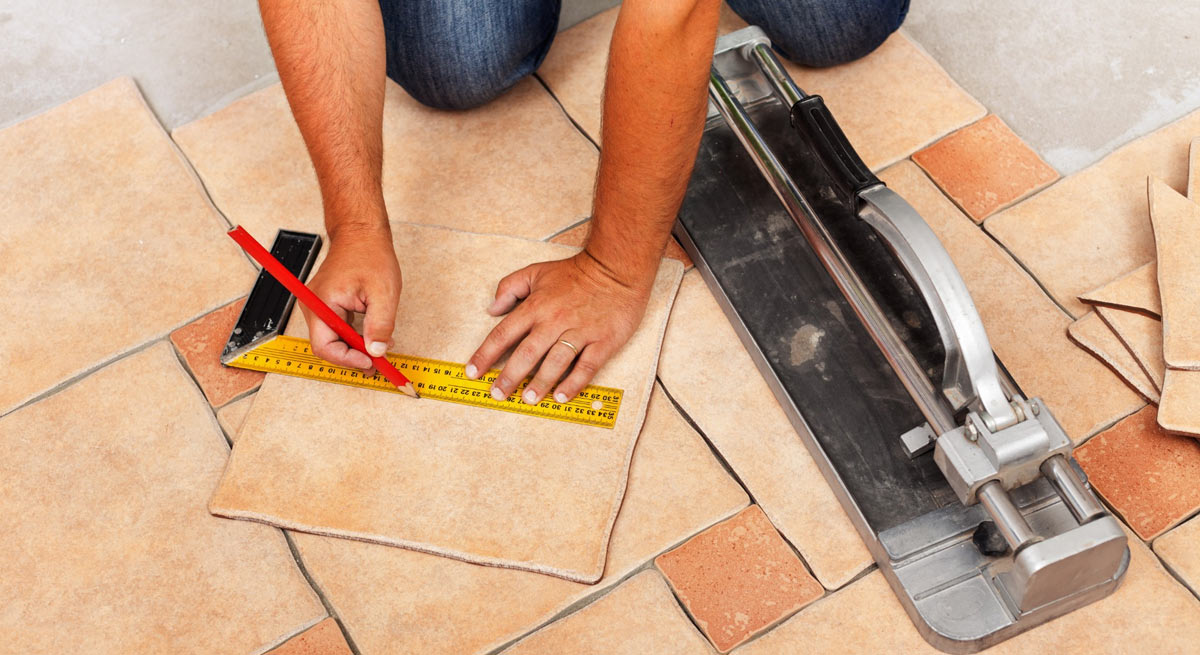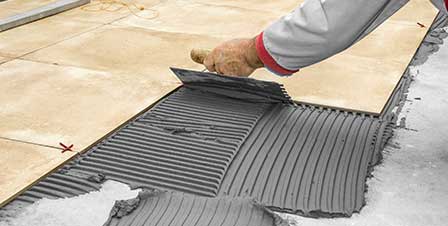Discover the Secrets to Perfect Tile Setup Every Time
Grasping the art of ceramic tile installation includes a collection of precise actions and strategies that, when carried out properly, can result in a seamless and polished finish. By understanding the tricks behind each step, you can make sure that your ceramic tile installation not just satisfies yet exceeds your expectations.
Appropriate Surface Area Prep Work
Reliable floor tile installation hinges substantially on precise surface area preparation to make sure a perfect result. Before laying floor tiles, it is essential to evaluate the substrate's condition completely. The surface area has to be tidy, completely dry, and structurally appear to stop future issues such as loose ceramic tiles or split cement. Any type of existing flooring material, adhesives, or sealers need to be eliminated to create a consistent base for the new ceramic tiles.
To assure correct attachment, it is suggested to rough up smooth surface areas with sanding or scarifying. Additionally, applying a guide can boost bonding between the substrate and the ceramic tile adhesive. Unequal surfaces need to be leveled using a self-leveling substance to stop lippage and ensure a smooth coating.
Additionally, looking for prospective sources of dampness is crucial, as excess dampness can lead to mold growth and damage the tiles over time. Utilizing a wetness obstacle or waterproofing membrane layer in damp locations like kitchen areas or restrooms is vital to shield the floor tiles from water damage. By meticulously preparing the surface before floor tile installation, one can develop a resilient and aesthetically attractive tiled area that will certainly stand the examination of time.

Choosing the Right Adhesive
Selecting the appropriate adhesive is a crucial action in ensuring the effective setup of floor tiles. The type of adhesive you choose will depend on numerous elements such as the kind of floor tile, the substrate material, and the location of the setup. There are various kinds of adhesives readily available out there, consisting of thin-set mortar, mastic, and epoxy.

Epoxy adhesives are incredibly sturdy and waterproof, making them ideal for locations vulnerable to moisture such as cooking areas or bathrooms. They are likewise ideal for mounting glass or metal floor tiles. When selecting a sticky, make sure to follow the maker's referrals and think about the details needs of your tile setup job.
Precision Cutting Methods
One of the most common devices used for precision cutting in floor tile installation is the ceramic tile cutter. Ceramic tile cutters come in various types, including hands-on ceramic tile cutters, electric damp saws, and portable ceramic tile cutters. Hand-operated ceramic tile cutters are suitable for straight cuts on ceramic and porcelain floor tiles, supplying clean and exact edges.
In addition, using devices like tile scribes or glass cutters can aid in scoring and snapping tiles with precision. By mastering these accuracy her response reducing strategies, floor tile installers can make sure a professional finish and an aesthetically enticing result in their floor tile tasks.

Cement Application Tips
When transitioning from precision cutting methods to grout application in ceramic tile installation, attention to information and technique is extremely important for attaining a perfect surface. Grout offers not just as a useful component that fills up the spaces between floor tiles however additionally plays a considerable function in the total aesthetic of the installation.
When using cement, work in small areas at once to stop it from drying out also quickly. Use a rubber float to press the cement into the joints at a 45-degree angle, making certain full protection and compacting the product. Once the cement is used, utilize a damp sponge to clean up the tiles, ensuring not to remove grout from the joints. Lastly, buff the tiles with a completely dry fabric to get rid of any kind of haze and accomplish a refined finish. Following these grout application suggestions will certainly result in a properly installed tile surface area that enhances the elegance of any type of room.
Finishing Touches and Maintenance
To complete the floor tile installment project successfully, focus to information throughout the completing touches and normal upkeep is crucial. After the grout has dried and the floor tiles are firmly in location, the final actions involve making certain that all sides are appropriately secured.
Normal maintenance is essential to maintaining the beauty and capability of your tiled surfaces. A straightforward regimen of sweeping or vacuuming followed by wiping with a gentle cleanser can aid maintain your floor my blog tiles looking beautiful (tile installation austin). For areas that are frequently exposed to wetness, site such as kitchens or shower rooms, routine resealing of grout lines is advised to stop mold and mildew and mold development
Conclusion
Finally, attaining ideal ceramic tile setup every single time requires interest to information and appropriate strategies. By focusing on surface area preparation, picking the right adhesive, making use of accuracy cutting techniques, applying grout thoroughly, and completed with attention to information, you can make certain a professional-looking outcome. Remember to adhere to these actions and keep your floor tiles regularly to lengthen their life-span and keep them looking their ideal.
One of the most typical tools utilized for accuracy cutting in floor tile installation is the ceramic tile cutter. Ceramic tile cutters come in numerous kinds, including hand-operated ceramic tile cutters, electric wet saws, and handheld tile cutters. Hands-on tile cutters are suitable for straight cuts on ceramic and porcelain tiles, offering clean and exact sides. In addition, making use of tools like ceramic tile scribes or glass cutters can help in racking up and snapping floor tiles with accuracy. By mastering these accuracy reducing strategies, tile installers can guarantee a professional finish and an aesthetically attractive outcome in their ceramic tile jobs.